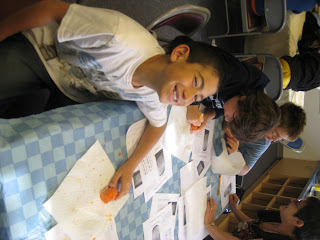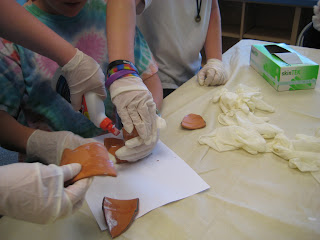On Sunday, November 6th, our Edot students were given the opportunity to learn about the skills and patience that archaeologists must have in order to reconstruct and interpret their finds. As we begin our exploration of ancient Jewish history over the coming weeks, it's important for the students to understand where and how the information we have was obtained and interpreted, and how historians and archaeologists work in tandem to understand each other's finds. Each of the 3 stations provided the students with "hands-on" experiences. In one station, students were asked to decode paleo-Hebrew letters on an ancient Judean coin minted during the Roman occupation, and to find a chapter in the Second Book of Kings in the Bible, describing how King Meshach of Moab successfully rebelled against Israel. They then compared the Biblical verse to the "Moabite Stone" discovered by archaeologists, on which King Meshach proclaims his successful rebellion. A second station taught the students how to use "pottery typology charts" developed by archaeologists, to date specific pottery forms. The students were then asked to reconstruct a broken clay pot, as archaeologists must often do. The third station introduced "cylinder seals" to the students, which were used by kings in antiquity to "sign" edicts and other proclamations written by scribes. Students created their own "seals," carving their paleo-Hebrew initials into a piece of carrot, then rolling the carved side of the carrot onto a flattened piece of Play-Doh to view the raised initials.
The following photos share the focus and delight of the students, as they worked together on their projects.









No comments:
Post a Comment